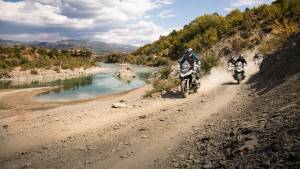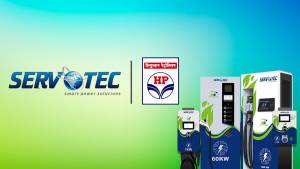Ignited minds
Team OD
Published: August 26, 2011, 12:32 AM IST
Indian talent in the science and technological sector is without a doubt, brilliant, and our engineers are highly acclaimed and find themselves at the helm of some of the top companies across the globe. I have rubbed shoulders with some of these engineers from many auto companies and I could feel a similar buzz in the crowd of over a thousand students in Pithampur, Indore.
In its 4th year of existence, the 2011 JK Tyre Baja SAEIndia witnessed about 1700 engineering students from 79 teams across the country. These students battled it out at the National Automotive Testing and R&D Infrastructure Project (NATRiP) in sunny Indore along with their dune buggies built under the guidance of a faculty member of their respective institution. This is the 4th event in the series, started in 2007. The first event of JK Tyre Baja SAEIndia had started with the participation of 27 teams which later increased to 56. This year's competition has seen over 200 entries and 79 shortlisted teams which is incredible in itself. This year, the maneuverability test was a separate test and not included in the main endurance event and had sand pits, gravel and logs. Other tests were straight line dynamics, performance, braking and hill climbing which was a whopping to 45 degrees.
Day two witnessed an even more demanding two-and-a-half-hour endurance race. There were a total of 1000 points spread across design evaluation, cost evaluation, engineering and sales presentation, dynamic tests such as maximum speed, acceleration, hill climbing, and maneuverability and finally two and half hours of endurance run.
The event was organised by Society of Automotive Engineers India (SAEIndia) in association with NATRiP and Automotive Research Association of India (ARAI) The Baja (pronounced Baha) is modelled on a globally popular student competition Mini Baja initiated by the SAE International (Society of Automotive Engineers), USA. This event was being promoted by JK Tyre and co-sponsored by Mahindra & Mahindra, Cummins India, BPCL, ITW Chemin, Kohler-Lombardini and others.
The event provides the students with a project that involves design, engineering, planning, manufacturing and marketing the product which mimics the procedures involved in the launch of an actual product. Teams compete to have their design accepted for manufacture by a fictitious firm. Students must function as a team not only to design, build, test, promote, and run a vehicle within the limits of the rules, but also to generate financial support for their project and manage their educational priorities.
Speaking at the event, Pawan Goenka, President, Automotive Mahindra & Mahindra, said, "I am very pleased with the way the event has matured in its fourth year. We are extremely happy with the maturity level of all the key aspects of this unique event such as the way it has been organised, the number of participating teams and also the designing and manufacturing of the vehicles."
Prizes worth ` 40.5 lakh were given out to students. GH Raisoni College of Engineering, Pune managed to win the gruelling endurance race and also managed to score in the acceleration test with an overall score of 768 points out of 1000. The top honours were secured by Sant Longewal Institute of Engineering and Technology, Punjab whose consistent performance throughout saw them score 801 points out of 1000. Close on Raisoni's heels was another team from Pune, SNK College of Engineering, which scored 751 points and finish third overall.
There were numerous awards handed out to other teams for static events. The Technology Innovation award was presented to DY Patil Engineering, Pune, whereas SRM University, Kancheepuram, Tamil Nadu bagged the Go Green Award. The Hall of Fame for Excellence Award was also won by GH Raisoni College of Engineering & Management, Pune. The other category award like the Raftaar award was won by IIT Mumbai and Maximum Acceleration Award by GH Raisoni College of Engineering & Management, Pune respectively. Green Vehicle Award went to NIIT, Jamshedpur. Overall winners Sant Longewal Institute of Engineering and Technology received ` 5 lakh and also an ATV from Powersports.
Free-wheeling
In conversation with SAEIndia chairman R Dayal
OVERDRIVE : How did the 2011 event gpo?
R DAYAL :Through events such as Baja, we wish to develop our human capital to meet the challenges of the industry for tomorrow. The Baja 2011 was deemed successful the day we received phenomenal registrations of over 200 participants in the first phase. The Go Green theme implemented by our young organising committee is an effort in the direction of environmental consciousness. Baja SAEIndia 2011 was better than the previous editions in all respects. However, there are learnings which we need to implement in the subsequent editions.
Will alternate fuels come to future Bajas?
The Go Green theme was introduced this year with a view to encouraging the young engineers of tomorrow to design and develop environment friendly technology. As a matter of fact, the theme was suggested by a ex-Baja participant, Ankur Anand, who joined the organising committee, and was assigned the responsibility of the co-convener. Through this theme, we tasked the students to cut emissions, reduce weight and work with recyclable materials. It is also a great learning platform as the students get to know about the latest trends, through practical implementation. The ELV regulations of Europe for instance are not known to the common man, but all the participants must be aware of it after Baja SAEIndia 2011 concluded. As for alternate propulsion, our concern is safety. Hybrid technologies require a high degree of skill and strong quality measures.Given the educational scenario, where resources are limited, it would not be a viable option for us in the near future. We can't expect students to shell out chunks of money for the event.
Do you see the event improving the quality of young engineering graduates?
Oh yes. I've had the opportunity to witness ex-Baja participants or Baja alumni, join the industry and work as professionals. There is a certain sheen to them which makes them stand a tad above their peers. The Baja participants have experienced team work, leadership roles, marketing and gained immense technical know-how during the project. They exhibit this when they join the workforce. This year Baja alumni made up a big part of the organising committee, to the extent that the co-convener was a team leader in the maiden event in 2007, handled various roles in subsequent events and given the charge to lead from the front in 2011. With the Baja, Supra and the FFI-Cycle, we are creating a new league of technocrats, managers, entrepreneurs and leaders.
What is the SAE Supra event?
Baja speaks of rough terrain, Supra is
about tarmac. It requires a different ideology as it's a high speed event. The event is being conducted for the first time in India later this year and we're expecting a lot from it.

In conversation with organising committee chairman Craig Barnes
OVERDRIVE: Four editions down, how do you plan to scale up the event?
C Barnes: We introduced a virtual competition in July where the teams showed their designs and the top 80 came to Pithampur to compete. In this way, students gain access (via sponsors) to the latest computer-aided design tools as well as learn to present their work. We continue to look at ways to allow more teams to participate as well as providing them more exposure to international designs. Our goal is to have teams from abroad compete here as well as Indian teams compete abroad at some point. We will continue to seek government and industry support to enable this.
How is the Baja event improving the skills sets of young Indian engineers?
Indian engineering talent is strong in the fundamental skills. Due to this strong focus, however, there is not as much time for students to participate in activities outside of their studies. SAE is working to establish opportunities for professors and students to get some real world experiences to apply their knowledge and also learn the soft skills required to work in the automotive industry. SAEIndia Baja is one of those events. The growth in the number of sponsors as well as increased participation in the HR meet indicate the value OEMs see in the skills being learnt from the SAEIndia Baja. I can personally say that I am very pleased with the talent we at Cummins have recruited from the event and look forward to continuing to support the event and its associated activities.
Related Stories
Top Stories
Latest Videos
Most Popular
Network18 Updates
Compare














